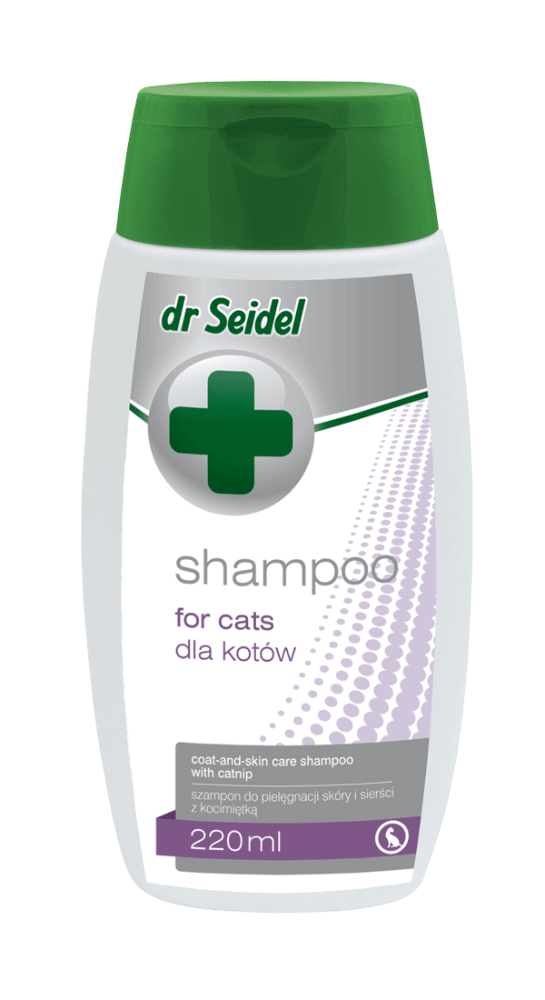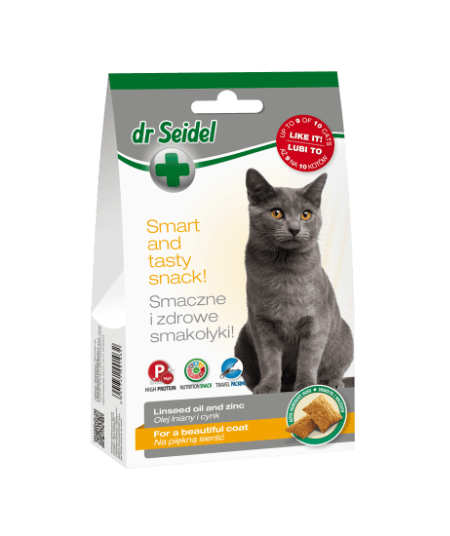How to care for your cat’s coat?
How to care for your cat’s coat?
Beautiful, strong, shiny coat is the pride of a healthy cat. Most cats can handle self-grooming just fine, yet, there are times when they could use your help. How to do that properly?
Cats spend a third of their lives on self-grooming. The function of licking fur off is not purely hygienic. By doing that, the cat ensures better protection from heat and cold, stimulates blood circulation and relieves tension. However, the cat’s tongue is not always enough. Sometimes your pet may require additional grooming. Let us also not forget about the influence of the diet and consumed nutrients on the condition of the cat’s coat.
Grooming a short-haired cat
Grooming short-haired cats is not difficult. Usually, it is enough if you brush your cat once a week. For cats with thin undercoat, even less frequent grooming may suffice as they do not swallow much fur when they self-groom. Cats with thick undercoat require more frequent brushing. A comb or a soft bristle brush will be perfect for grooming a short-haired cat. With a comb you can comb out both dead undercoat and top coat. A rubber brush might also be useful to quickly comb your pet. Cats with thick undercoat may require one more tool, a furminator (also called a deshedding tool), which has thick, metal teeth very efficient at removing large amounts of dead hair, especially from the undercoat. It protects the cat from swallowing hair balls (trichobezoars). A furminator is particularly useful in your cat’s coat shedding period.
Cats need to be brushed gently as their skin is very sensitive. A seemingly gentle stroke of a brush or an accidental scratch with a metal tip of the brush might cause your pet to feel pain and hence discourage it from future grooming sessions. It is best to take some time to pet your cat before starting to brush it. Next, comb the coat on its head and neck, the back and tail, reaching the belly at the end. Here, you must be particularly careful as both the hair and the skin in this area are very sensitive. Note that not all cats will tolerate having this body part touched.
Grooming cats with long and semi-long hair
Cats with long and semi-long hair require more frequent, even daily grooming. Moreover, they may need a slightly different set of tools. A furminator will prove useful during the shedding period, however, it may also come in handy to precisely comb out dead hair, e.g. once a week. Apart from that, consider getting a wide-tooth comb to prevent matting and a bristle brush that lifts the fur, giving it more volume and making it fluffier. If a mat forms, don’t try to comb it out with a comb or a brush as that would be painful to your cat. You might need a tool called a dematter, which has curved, hook-shaped blades designed for disentangling or removing mats.
You should start brushing your long-haired cat from the particularly long hair that forms a collar around its neck and then move on to their belly. In these areas, fur might be the most tangled. Continue brushing towards the rear paws. Finish by brushing the back and the tail. In case of breeds with naturally bushy tails, such as the Maine coon, you should avoid brushing too much hair out of the tail so as to not distort its characteristic shape.
Cat in the bath
Cats and water? Although it’s a controversial pairing, there are cats that are not afraid of water or at least tolerate baths. In the case of short-haired cats, baths are not necessary. Some exceptions from that include allergies and other skin ailments or significant dirtiness. On the other hand, long-haired cats should be bathed as that will prevent excessive the skin from becoming greasy and keep the cat’s fur in good condition.
The pet must be bathed in lukewarm water with the use of a shampoo dedicated specifically to cats. You must not use products intended for people. A cat shampoo must be appropriate for the pet’s sensitive, easily irritated skin and nourish and moisturise the fur at the same time. Dr Seidel shampoo for cats contains mild ingredients that clean, moisturise and nourish. It effectively removes dirt without affecting the skin’s natural protective barrier. The shampoo makes combing easier, prevents matting and reduces static electricity in the fur.
You can dilute the shampoo in water to make the application easier. Apply it on the coat and gently massage until it lathers. Then rinse, taking care not to let water get into your cat’s ears. After the bath, your cat should not be immediately let out of the bathroom into a cool room as that may cause it to catch a cold. It is best to wrap the cat in a towel and wait until the coat slightly dried. You can briefly dry your cat’s fur with a hair dryer, setting it to the weakest air flow but do that only if you know that turning on the hair dryer does not scare your cat.
Take care of your cat’s coat from the inside out
Healthy fur requires a healthy diet. To maintain the cat’s coat in good condition appropriate amounts of unsaturated fatty acids, zinc and vitamins A, D and E are needed. Those nutrients are supplied to the cat in food but not always in sufficient amounts. Moreover, the nutritional requirements may be higher throughout spring. To satisfy them, you may use a supplement, such as Dr Seidel Flawitol Omega Complex, which contains fish oils and flax seed oil – perfect sources of unsaturated fatty acids and fat-soluble vitamins. The product also increases your pet’s immunity. You should give it to your cat in its shedding period and in the case of any skin ailments. As a part of daily care for your cat’s coat, you can give it Dr Seidel snacks for beautiful coat, which are rich in zinc and flaxseed oil. They are healthy snacks perfect for every cat.
22 January 2019



